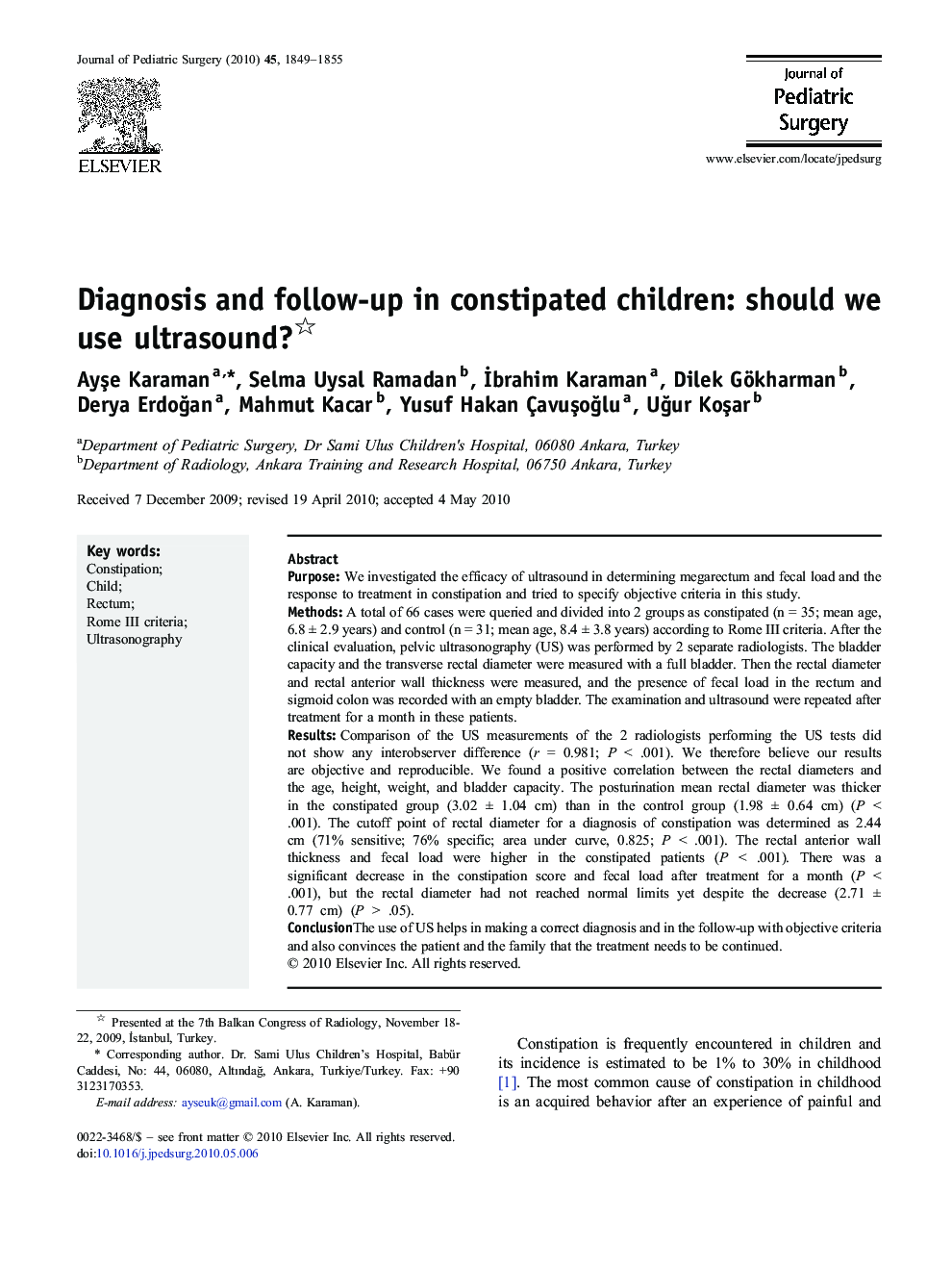| Article ID | Journal | Published Year | Pages | File Type |
|---|---|---|---|---|
| 4158376 | Journal of Pediatric Surgery | 2010 | 7 Pages |
PurposeWe investigated the efficacy of ultrasound in determining megarectum and fecal load and the response to treatment in constipation and tried to specify objective criteria in this study.MethodsA total of 66 cases were queried and divided into 2 groups as constipated (n = 35; mean age, 6.8 ± 2.9 years) and control (n = 31; mean age, 8.4 ± 3.8 years) according to Rome III criteria. After the clinical evaluation, pelvic ultrasonography (US) was performed by 2 separate radiologists. The bladder capacity and the transverse rectal diameter were measured with a full bladder. Then the rectal diameter and rectal anterior wall thickness were measured, and the presence of fecal load in the rectum and sigmoid colon was recorded with an empty bladder. The examination and ultrasound were repeated after treatment for a month in these patients.ResultsComparison of the US measurements of the 2 radiologists performing the US tests did not show any interobserver difference (r = 0.981; P < .001). We therefore believe our results are objective and reproducible. We found a positive correlation between the rectal diameters and the age, height, weight, and bladder capacity. The posturination mean rectal diameter was thicker in the constipated group (3.02 ± 1.04 cm) than in the control group (1.98 ± 0.64 cm) (P < .001). The cutoff point of rectal diameter for a diagnosis of constipation was determined as 2.44 cm (71% sensitive; 76% specific; area under curve, 0.825; P < .001). The rectal anterior wall thickness and fecal load were higher in the constipated patients (P < .001). There was a significant decrease in the constipation score and fecal load after treatment for a month (P < .001), but the rectal diameter had not reached normal limits yet despite the decrease (2.71 ± 0.77 cm) (P > .05).ConclusionThe use of US helps in making a correct diagnosis and in the follow-up with objective criteria and also convinces the patient and the family that the treatment needs to be continued.
